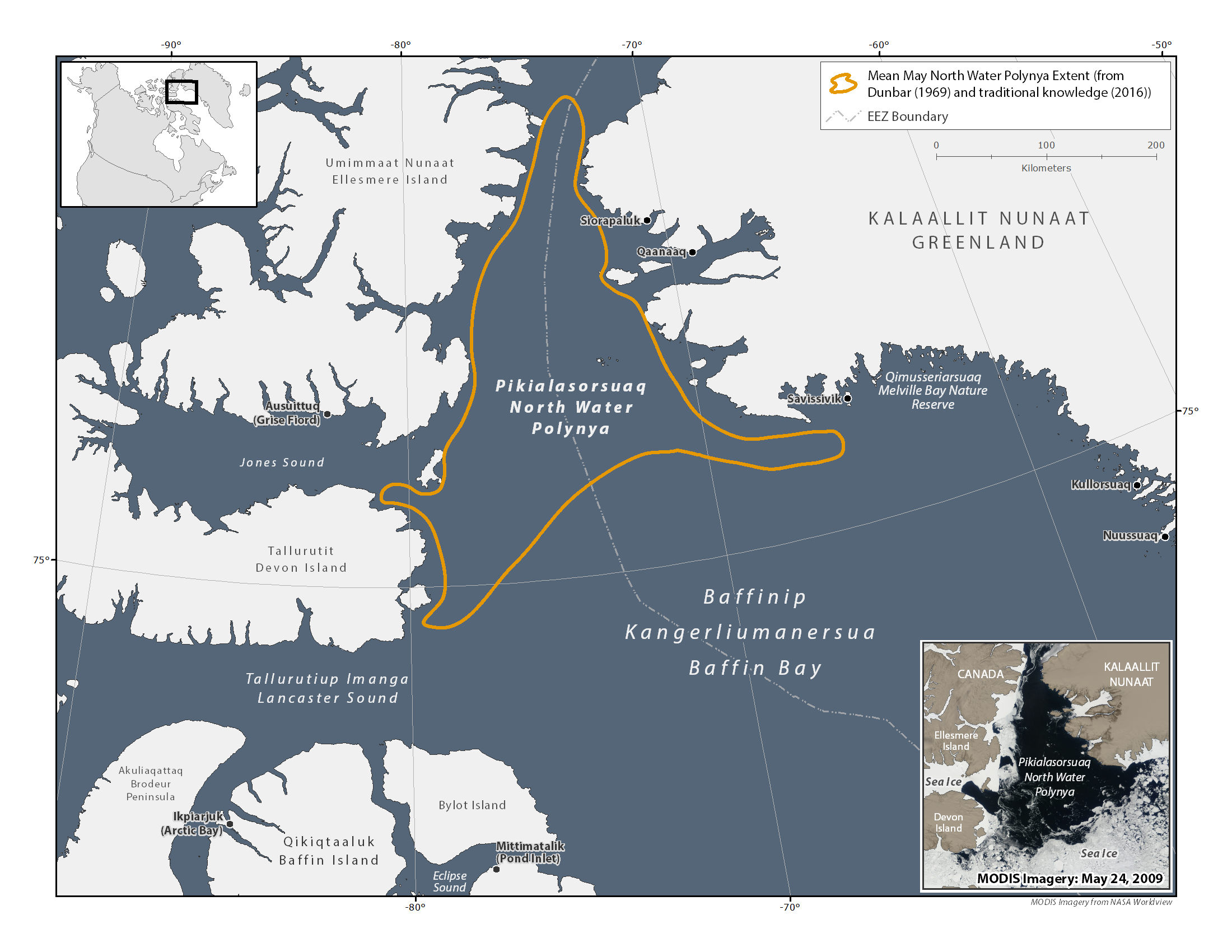People of the Ice Bridge

During winter in the high-latitude Arctic Ocean, sea ice reflects much of the sun’s energy until seasonal melting promotes a spectacular plankton bloom along floe edges and even beneath the ice. The annual explosion of Arctic life starts first in polynyas, areas of northern sea kept perennially ice-free by wind and currents set in motion by the Earth’s rotation. During this spring bloom, the North Water polynya between Canada and Greenland is the single most productive part of the ocean north of the Arctic Circle.
Fueled by a profusion of Arctic cod that feed on plankton, this polynya becomes the centerpiece for one of the world’s great spring migrations of walrus, seals, polar bears, beluga, bowhead whales and roughly 80 to 90 percent of the planet’s narwhal population. It provides the feeding and breeding grounds for millions of seabirds, including an estimated two-thirds of the world’s dovekies and thick-billed murres.
Inuit in Canada and Greenland have known this about the North Water polynya for millennia. They call it Pikialasorsuaq, or the Great Upwelling, in Greenlandic. Their ancestors once used the ice bridge across its northern edge to migrate into what is now Greenland. And Inuit in Canada and Greenland still live near the polynya and rely upon its bounty for life-sustaining activities like hunting and fishing.
Befitting their connection to this amazing part of the Arctic, Inuit in both countries have taken the lead in planning for its future. An Inuit-led commission recently published People of the Ice Bridge: The Future of the Pikialasorsuaq, a report that made three recommendations to protect this region and its people:
- Establish an Inuit management authority to ensure conservation of living marine resources and health of communities that depend on them and lead an Inuit community-based monitoring program;
- Identify a protected area that includes the polynya itself and a larger management zone that connects Inuit communities to the polynya; and,
- Establish a free-travel zone for Inuit across the region.
By looking at the entire region, the report’s three-part framework embodies the best kind of eco-regional planning and thinking and challenges governments to think creatively about implementing a regional approach. The report is also one model for how to create durable conservation in a fast-changing Arctic with leadership and participation of Inuit. The call for Inuit co-management and monitoring in Pikialasorsuaq echoes what Inuit leader Mary Simon recommended in her report A New Shared Arctic Leadership Model that was commissioned by the Canadian government. Simon emphasized how approaches to marine conservation like indigenous protected areas can play a crucial role in reconciliation between governments and indigenous people in the North.
Inuit leaders are now working to implement the Pikialasorsuaq Commission’s recommendations with Canada and Greenland, and will need to continue to innovate to protect one of the Arctic’s most important places. Conservationists like Ocean Conservancy and Oceans North, our colleagues in Canada, will continue to support this and other community-driven conservation efforts.